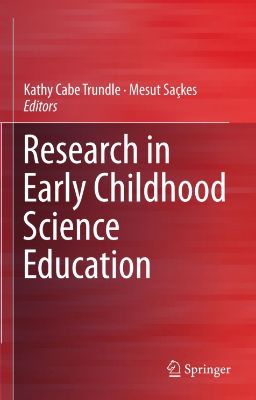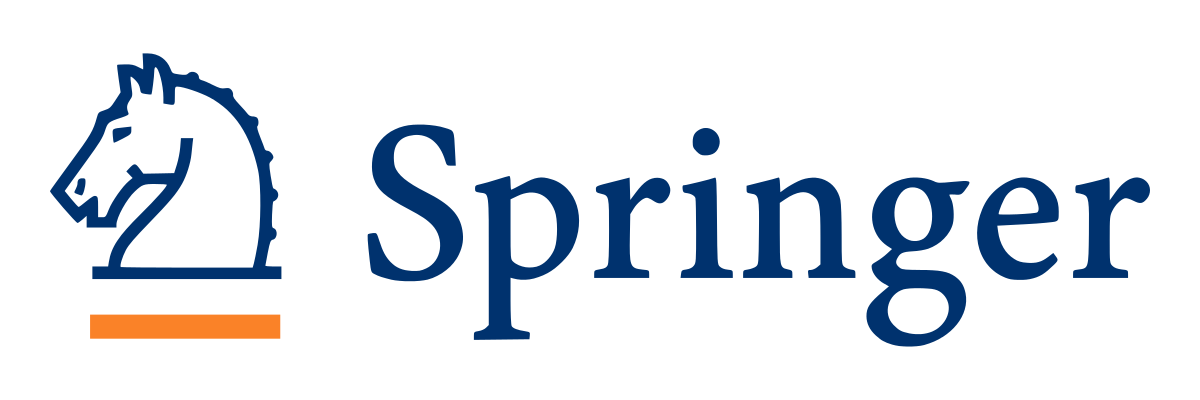Research in Early Childhood Science Education

Námskeið
-
NSY0156130 Náttúruvísinda- og stærðfræðikennsla yngri barna
Lýsing:
This book emphasizes the significance of teaching science in early childhood classrooms, reviews the research on what young children are likely to know about science and provides key points on effectively teaching science to young children. Science education, an integral part of national and state standards for early childhood classrooms, encompasses not only content-based instruction but also process skills, creativity, experimentation and problem-solving.
By introducing science in developmentally appropriate ways, we can support young children’s sensory explorations of their world and provide them with foundational knowledge and skills for lifelong science learning, as well as an appreciation of nature. This book emphasizes the significance of teaching science in early childhood classrooms, reviews the research on what young children are likely to know about science, and provides key points on effectively teaching young children science.
Annað
- Útgáfudagur: 2015-04-15
- Hægt að prenta út 2 bls.
- Hægt að afrita 2 bls.
- Format:Page Fidelity
- ISBN 13: 9789401795050
- Print ISBN: 9789401795043
- ISBN 10: 9401795053
Efnisyfirlit
- Foreword
- Contents
- Chapter 1: The Inclusion of Science in Early Childhood Classrooms
- Science and the Early Childhood Years
- Purpose and Rationale
- Organization of Chapters
- Closure
- References
- Chapter 2: Young Children’s Motivation for Learning Science
- Conceptualizing Motivation and Theoretical Frameworks
- Children’s Science Motivation During Preschool and the Early Grades
- Children’s Curiosity and Questions About Science
- Children’s Interest in Science Activities
- Children’s Motivational Beliefs About Learning Science
- Changes in Science Motivation from the Early to Later Grades
- Experiences Shape Children’s Motivation for Learning Science
- Few Opportunities to Engage in Meaningful Science
- Low Disciplinary Integrity of Science Lessons
- Science Is Often Not Recognizable in Science Lessons
- Declines in Science Motivation and Misunderstanding the Nature of Science Are Not Inevitable
- Measuring Young Children’s Science Motivation
- Methodological Approaches
- Methodological Concerns
- Methodological and Theoretical Advancements Needed for Research of Young Children’s Science Mo
- Relevance of Science Motivation Research to Classroom Teaching Practices
- References
- Chapter 3: Young Children’s Ideas About Earth and Space Science Concepts
- Earth Science Concepts
- Rain and Clouds (Mechanism of Rain Fall)
- Wind
- Thunder and Lightning
- Summaries of Children’s Understanding of Earth Science Concepts
- Space Science Concepts
- Shape of the Earth
- Day and Night Cycle
- Seasons
- Lunar Concepts
- Summaries of Children’s Understanding of Space Science Concepts
- Directions for Future Research
- References
- Earth Science Concepts
- Chapter 4: Young Children’s Ideas About Physical Science Concepts
- Reviewing the Research Literature
- Young Children’ Ideas About Matter
- Young Children’ Ideas About Heat and Temperature
- Young Children’ Ideas About Evaporation, Condensation and the Water Cycle
- Young Children’ Ideas About Forces and Motion
- Young Children’ Ideas About Floating and Sinking
- Young Children’ Ideas About Electricity
- Young Children’ Ideas About Light
- Perspectives and Frameworks Guiding Research
- The Research Methodologies
- Evidence of Effectiveness of Intervention Studies
- Implications for Classroom Practices
- Directions for Future Research
- References
- Reviewing the Research Literature
- Chapter 5: Children’s Ideas About Life Science Concepts
- Theoretical Frameworks
- Young Children’s Ideas of Life Science Concepts
- Children’s Conceptions of the Distinction Between Living and Non-living
- Children’s Conceptions of Growth and Development
- Young Children’s Conceptions of Germs and Contagions
- Young Children’s Conceptions of Plants and Animals
- Research Methods Used to Elicit Young Children’s Understandings
- Recommendations for Future Research
- Implications for Teaching
- References
- Chapter 6: Too Little, Too Late: Addressing Nature of Science in Early Childhood Education
- Introduction
- What Is the Nature of Science, and Why Teach It?
- Developmentally Appropriate Nature of Science for Early Childhood Years
- Teaching the Nature of Science in Early Childhood Years
- Teacher Conceptions of Nature of Science
- Promoting Effective Nature of Science Instruction
- Assessing Nature of Science
- Discussion
- Appendix: Questions from VNOS-D and –E
- References
- Chapter 7: Development of Science Process Skills in the Early Childhood Years
- Curiosity: The Desire to Resolve Uncertainty
- Dealing with Uncertainty: Asking Questions
- Investigating Uncertainty: Early Experimentation Skills
- Interpreting and Using Data: Early Evidence Evaluation Skills
- Learning to Do Science
- Discussion and Conclusions
- References
- Chapter 8: The Use of Technology in Teaching Science to Young Children
- Introduction
- Integrating Technology and Scientific Inquiry
- Teaching Science, Technology, and Mathematics
- Technology in Early Childhood Education
- Children’s Use of Technology
- Searching
- Photobook
- Simulation
- Robots
- Microworld
- Tablet PC
- Teachers and Technology
- Conclusion
- References
- Chapter 9: Physical-Knowledge Activities for the Development of Logico-mathematical Knowledge
- Piaget’s Theory and Research
- The Three Kinds of Knowledge Distinguished by Piaget
- Three Examples of Piaget’s Research Related to Early Childhood Science Education
- Piaget’s Ideas About Education
- Other Examples of Physical-Knowledge Activities
- Jenga
- The Balance Game
- Bowling
- The Domino Effect
- Ramps and Pathways
- Principles of Teaching
- Evidence of the Effectiveness of Physical-Knowledge Activities
- References
- Piaget’s Theory and Research
- Chapter 10: Science and Literacy: Considering the Role of Texts in Early Childhood Science Educa
- The Challenges of Science Texts
- Commercially Produced Texts and Trade Books
- Science Textbooks
- Trade Books
- Inquiry Science and Text Integrations
- Science IDEAS (In-Depth Expanded Applications of Science): Textbooks, Trade Books, Leveled Books
- GIsML (Guided Inquiry Supporting Multiple Literacies): The Notebook Text
- Science Start! Science Related Trade Books/Child-Produced Reports
- ISLE (Integrated Science-Literacy Enactments): Science Information Books/Child Produced Information
- SLP (Science Literacy Project): Science Information Trade Books/Children’s Science Notebooks
- Seeds of Science/Roots of Reading (SSRR): Researched, Inquiry-Supportive Texts/Writing in Multip
- CALI (Content Area Literacy Instruction): Child by Instruction Interactions
- Discussion and Conclusions
- Methodological Concerns
- Background Knowledge: The Significance of Science Trade Book Read Alouds and Science Little Book
- Promising Practices in Text Integrated Inquiry Science
- References
- Chapter 11: Role of Play in Teaching Science in the Early Childhood Years
- Introduction
- The Modern Play Theories
- The Psychoanalytic Theories of Play
- Freud’s Theory
- Erikson’s Theory
- The Cognitive Theories of Play
- Piaget’s Theory of Play
- Vygotsky’s Theory of Play
- An Overview of the Studies on Play and Cognitive Development
- Learning Through Play
- Science Through Play
- The Research on Play-Based Science Instruction for Young Children
- Inquiry-Based Science Teaching
- Conclusion
- References
- Chapter 12: A Modeling-Based Inquiry Framework for Early Childhood Science Learning
- Models and Modeling in Science Education Reform
- A Modeling-Based Inquiry Framework for Early Childhood Science Learning
- Modeling-Based Inquiry with Young Children
- Our Framework for Implementing Modeling-Based Inquiry
- Examples from Science Classroom Discourse
- Articulating a Model as a Context for Inquiry
- Identifying Relevant Evidence
- Using Inscriptional Tools to Support Inquiry
- Collecting and Interpreting Evidence
- Discussion and Implications
- Implications for Classroom Practice
- Implications for Future Research
- References
- Chapter 13: Connecting Young Children with the Natural World: Past, Present and Future Landscapes
- Connecting Young Children with the Natural World: Past, Present and Future Landscapes
- Children and Nature: The Historical Landscape
- Moving from a Historical Perspective to the Current Context of Children and Nature Within Ear
- Engaging Young Children with Nature: Trends in the Twenty-First Century Landscape
- Looking to the Future: Teaching Children to Value Nature
- References
- Chapter 14: Teaching Science to Young Children with Special Needs
- Students with Special Needs and Science Education Legislation
- Evidence-Based Science Education
- Literature on Science Instruction
- Purpose
- Method
- Results
- Participants
- Setting and Instructional Arrangement
- Research Design
- Dependent Variables
- Independent Variables
- Effects
- Discussion
- Implications for Practice
- Inquiry Based Science Instruction
- Explicit Instruction
- Peer-Mediated Instruction
- Shared Reading
- Graphic Organizers
- Technology
- Limitations and Future Research
- Conclusion
- References
- Introduction
- Terminology
- Theoretical Frameworks and Methodologies
- Contexts of Science Education for Young Emergent Bilinguals
- Review of the Research
- Curriculum Development
- Teacher Professional Development
- Student Outcomes
- Classroom Interaction
- Implications and Future Directions
- References
- Assessment in Early Childhood Science Education
- A Framework to Guide Assessment in Early Childhood Science
- State Early Learning Standards and Early Childhood Curricula
- The K-12 Conceptual Framework and Next Generation Science Standards
- Summary
- Assessing Young Children’s Science Competence
- Summative Assessment
- Assessing Related Constructs
- Curriculum Specific Assessments
- Achievement Tests
- Broad Based Adaptive Assessments of Science Competence
- Performance Based Measures
- Summary
- Screening and Formative Assessment
- Galileo System for the Electronic Management of Learning
- C-PALLS+
- Summary
- Summative Assessment
- Pedagogical Knowledge
- Science Teacher Performance Tasks
- Pedagogical Content Knowledge Interview
- Summary
- Teaching Practices
- Science Fidelity of Implementation Measure
- Summary
- Attitudes and Beliefs Towards Science Teaching
- Preschool Teacher Attitudes and Beliefs Toward Science Teaching Questionnaire
- Availability of Science Materials and Time Spend in Science Activities
- Science Observational Scales
- Science Teaching and Environment Rating Scale
- Preschool Rating Instrument for Science and Mathematics
UM RAFBÆKUR Á HEIMKAUP.IS
Bókahillan þín er þitt svæði og þar eru bækurnar þínar geymdar. Þú kemst í bókahilluna þína hvar og hvenær sem er í tölvu eða snjalltæki. Einfalt og þægilegt!Rafbók til eignar
Rafbók til eignar þarf að hlaða niður á þau tæki sem þú vilt nota innan eins árs frá því bókin er keypt.
Þú kemst í bækurnar hvar sem er
Þú getur nálgast allar raf(skóla)bækurnar þínar á einu augabragði, hvar og hvenær sem er í bókahillunni þinni. Engin taska, enginn kyndill og ekkert vesen (hvað þá yfirvigt).
Auðvelt að fletta og leita
Þú getur flakkað milli síðna og kafla eins og þér hentar best og farið beint í ákveðna kafla úr efnisyfirlitinu. Í leitinni finnur þú orð, kafla eða síður í einum smelli.
Glósur og yfirstrikanir
Þú getur auðkennt textabrot með mismunandi litum og skrifað glósur að vild í rafbókina. Þú getur jafnvel séð glósur og yfirstrikanir hjá bekkjarsystkinum og kennara ef þeir leyfa það. Allt á einum stað.
Hvað viltu sjá? / Þú ræður hvernig síðan lítur út
Þú lagar síðuna að þínum þörfum. Stækkaðu eða minnkaðu myndir og texta með multi-level zoom til að sjá síðuna eins og þér hentar best í þínu námi.
Fleiri góðir kostir
- Þú getur prentað síður úr bókinni (innan þeirra marka sem útgefandinn setur)
- Möguleiki á tengingu við annað stafrænt og gagnvirkt efni, svo sem myndbönd eða spurningar úr efninu
- Auðvelt að afrita og líma efni/texta fyrir t.d. heimaverkefni eða ritgerðir
- Styður tækni sem hjálpar nemendum með sjón- eða heyrnarskerðingu
- Gerð : 208
- Höfundur : 17118
- Útgáfuár : 2015
- Leyfi : 380


